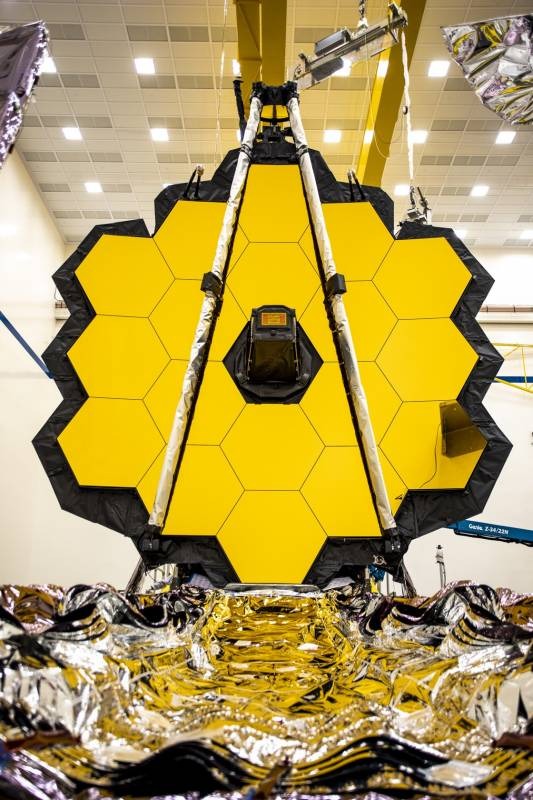NASA's James Webb Space Telescope just tested a crucial part
The James Webb Space Telescope, NASA's newest way to peer deep into the universe and track distant stars and potential locations for life, is another step closer to launch, having aced the latest test of one of its most important components. Expected to launch next year, the new telescope needs to be perfect before it's deployed because, unlike with Hubble, there's no way for astronauts to repair it after the fact.
That's a considerable challenge, but so far Webb and the team from NASA, the ESA, the CSA, and Northrop Grumman has been rising to meet it. The latest phase has been deploying and extending the so-called Deployable Tower Assembly.
It may sound simplistic, but it's actually core to how Webb actually goes about carrying out its scientific endeavors. It's the part of the space telescope which separates out the upper part of the observatory – where the gold mirrors and scientific instruments are mounted – and the lower part of the spacecraft. That lower section, known as the spacecraft bus, is where the electronics are along with the propulsion systems.
For Webb to operate, however, the mirrors and instrumentation have to be cold. Very, very cold, in fact: not only will it be protected by a huge sunshield, it'll also be positioned near the Earth-Sun L2 Lagrangian point. That way, it can be kept below -370 degrees Fahrenheit.
The temperature is non-negotiable because the telescope is designed to capture in the low-frequency spectrum: from long-wavelength visible light through to mid-infrared. That includes light from objects too old and too far away for Hubble – which tracks near ultraviolet, visible, and near infrared – to see. If the mirrors and instrumentation are themselves too warm, they won't be able to detect the tiny differences in infrared light from distant astronomical objects.
The Deployable Tower Assembly is what keeps the cool part of Webb held apart from the warmer components. It extends 48 inches up, one of numerous movable parts that have been required to fit the overall space telescope into the payload fairing of an Ariane 5 rocket. That includes the sunshield, the mirrors, and more.

It's not a fast mast. The Deployable Tower Assembly took several hours to extend, with engineers using a system of pulleys, counterbalances, and a gravity-negation system crane to mimic the zero-gravity environment in which Webb will eventually find itself.
"It performed exactly as predicted," Alphonso Stewart, Webb deployment systems lead for NASA's Goddard Space Flight Center, confirms, "and from our expectations from previous tests before the full observatory was assembled. This was the first time that this part of Webb was tested in its flight-like configuration to the highest level of fidelity we possibly could. This test provides the opportunity to assess all interfaces and interactions between the instrument and bus sections of the observatory."
Right now, the goal is to launch Webb in March 2021. There had been concerns that the reaction to the COVID-19 pandemic – which saw numerous NASA projects put on hold, run remotely, or scaled back – might impact that, though the NASA and Northrop Grumman teams have recently resumed near-full operations, the space agency says.
